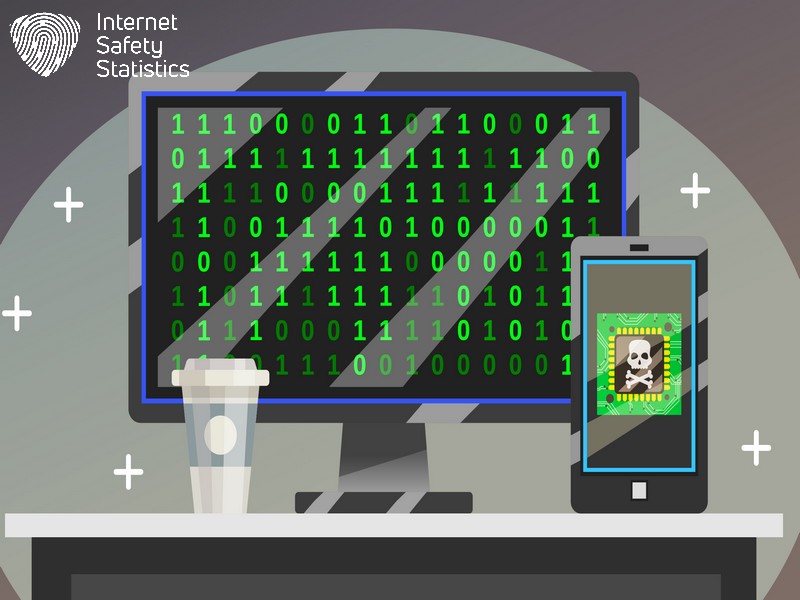
The digital age necessitates robust measures to safeguard our personal and professional data. While firewalls and antivirus software provide a baseline defence, a proactive approach is essential to identify and address system vulnerabilities before malicious actors can exploit them. This is where ethical hacking and penetration testing come into play.
Ethical hacking involves simulating a cyberattack but with a crucial difference: permission. Ethical hackers, working within a legal framework and with the system owner’s authorisation, employ various techniques to identify weaknesses in security measures. This simulated attack, known as penetration testing, allows organisations to understand their vulnerabilities and prioritize remediation efforts.
Ethical hackers provide valuable insights into the effectiveness of existing security protocols by uncovering potential entry points and exploiting system flaws. This empowers organisations to patch vulnerabilities and fortify their defences before actual cybercriminals can gain unauthorised access.
This guide delves into the fundamentals of ethical hacking and penetration testing. We will explore the methodologies employed by ethical hackers, the benefits of penetration testing for organisations, and the ethical considerations surrounding this critical security practice. By understanding these aspects, you’ll gain valuable insight into how ethical hacking protects systems and safeguards sensitive data in the digital world.
Discover how to become a cybersecurity hero!
What is Ethical Hacking?

Ethical hacking simulates a cyberattack on a computer system, network, or application with permission from the owner. The goal is to identify vulnerabilities that malicious hackers could exploit and then report them to the owner to fix them.
Here are some key points about ethical hacking:
- Authorised: Ethical hacking is always done with the permission of the owner of the system being hacked.
- Security Testing is a form of security testing that helps organisations identify and fix weaknesses in their defences before criminals can exploit them.
- Similar Techniques: Ethical hackers use many of the same techniques that malicious hackers do, but they use them for good.
- Improves Security: Ethical hacking improves the overall security of computer systems and networks by finding and fixing vulnerabilities.
What are the Ethics of Ethical Hacking?
Despite the seemingly contradictory term, ethical hacking adheres to a strict code of ethics to ensure its legitimacy and effectiveness. Here are some core principles that guide ethical hackers:
- Permission: The golden rule of ethical hacking is obtaining explicit consent from the system owner before conducting penetration testing. This ensures the activity remains legal and avoids any confusion with malicious attacks.
- Confidentiality: All information discovered during testing, including vulnerabilities and sensitive data, must be confidential. Ethical hackers typically sign non-disclosure agreements (NDAs) to guarantee this privacy.
- Legality: Ethical hackers only employ legal methods and tools during their tests. This means avoiding exploiting zero-day vulnerabilities (previously unknown flaws) or using social engineering tactics that could manipulate people.
- Transparency: The penetration test findings, including the identified vulnerabilities and potential risks, are documented and communicated transparently to the system owner. This allows for informed decision-making regarding remediation efforts.
- Respect: Ethical hackers treat the systems and data they test with respect. This involves avoiding causing any disruption or damage to the system during the testing process.
- Good Faith: The ultimate goal of ethical hacking is to improve the security posture of the tested system. Ethical hackers act in good faith, aiming to identify and report vulnerabilities responsibly, not for personal gain or to cause harm.
By adhering to these ethical principles, ethical hackers ensure their work remains legitimate and contributes positively to the overall cybersecurity landscape.
What is Penetration Testing?
Penetration testing, also known as ethical hacking, is testing a computer system, network, or web application for security vulnerabilities that an attacker could exploit. This proactive approach helps organisations identify and address potential weaknesses in their systems before malicious hackers can exploit them.
Definition
Penetration testing, often called pen testing, is a security checkup for computer systems. Think of it as a friendly hacker trying to intentionally break into your digital property—but with good intentions. The goal is to find weak spots in security before the bad guys do.
These tests mimic an actual cyberattack but without the harmful consequences. Experts use hacking tools and hacker mindsets to poke at information systems, revealing vulnerabilities. Businesses or individuals can fortify their network defences against real threats.
Purpose
Penetration testing serves the critical purpose of identifying vulnerabilities in information systems that malicious intruders could potentially exploit. Ethical hackers aim to pinpoint weak points and security flaws within a system by conducting these tests, allowing organisations to fortify their defences and protect sensitive data from unauthorised access. This proactive approach helps bolster overall security measures, ensuring that potential risks are mitigated before they can be exploited.
Furthermore, penetration testing is crucial for staying ahead of evolving cyber threats, providing insight into areas where additional safeguards may be necessary. Regular assessments help prevent potential breaches and foster trust among users and clients by demonstrating a commitment to maintaining secure digital environments.
Ethics
Moving from understanding the purpose of penetration testing to ethics, it is crucial to recognise that ethical hacking and penetration testing are conducted with clear guidelines and principles.
Ethical hackers adhere to a strict code of conduct when attempting to identify vulnerabilities within a system. This includes obtaining proper authorisation before performing any security assessments or tests, respecting privacy and confidentiality throughout the process, and ensuring that all findings are reported transparently to the system owners for further action. The ultimate goal is to identify weaknesses and strengthen overall security measures.
Fundamentals of Ethical Hacking and Penetration Testing
Penetration testing involves various stages and frameworks to identify and address security vulnerabilities in a system effectively. Understanding the different methodologies is crucial for ensuring comprehensive security testing.
Stages of Ethical Hacking and Penetration Testing
The penetration testing process involves several stages, each crucial in identifying vulnerabilities and strengthening security defences.
- Planning: This initial stage involves defining the test’s scope and objectives and obtaining necessary approvals from relevant stakeholders.
- Reconnaissance: Ethical hackers gather information about the target system or network using various tools and techniques to identify potential entry points.
- Scanning: In this stage, scanning tools are utilised to identify open ports, services running on the ports, and potential vulnerabilities within the system.
- Gaining Access: Ethical hackers attempt to exploit identified vulnerabilities to gain access to the system or network, demonstrating how an actual attacker could breach security measures.
- Maintaining Access: If successful in gaining initial access, ethical hackers aim to maintain persistence within the system by establishing backdoors or planting other forms of access for continued evaluation.
- Analysis: Throughout the process, detailed documentation is maintained on all findings and steps taken for future reference and reporting to stakeholders.
- Reporting: Finally, a comprehensive report includes an executive summary, technical details about vulnerabilities discovered, risk levels associated with each finding, and recommended countermeasures for mitigation.
Frameworks
Penetration testing frameworks provide a structured approach to conducting ethical hacking. These frameworks guide security professionals through identifying vulnerabilities and assessing potential risks within information systems.
Utilising these frameworks allows for comprehensive testing, ensuring that no critical areas of a system’s security are overlooked. Furthermore, they offer clear methodologies tailored to specific needs, ultimately enhancing the effectiveness and efficiency of penetration testing exercises.
Ethical hackers often rely on established frameworks such as Open Web Application Security Project (OWASP) and Penetration Testing Execution Standard (PTES) to plan and execute their assessments.
Black, White, and Grey Box Testing
Black, white, and grey box testing are different approaches to penetration testing that provide the tester with varying levels of information. Understanding their differences can help determine the most effective approach for securing systems.
Differences and Use Cases
When considering the security of computer systems, it’s crucial to understand the different approaches ethical hackers use. One way to categorise these methods is by the level of knowledge about the hacker’s system before starting the test: black box, white box, or grey box testing. Each type has distinct differences and specific scenarios where they are most effectively used.
| Type of Testing | Knowledge Before Testing | Approach | Use Cases |
|---|---|---|---|
| Black Box | None | External testing with no prior knowledge of the system internals. | It is ideal for thorough audits and for developers to verify secure coding practices. |
| White Box | Complete | In-depth testing with full knowledge and access to all source codes and documentation. | Ideal for thorough audits and for developers to verify secure coding practices. |
| Grey Box | Partial | A blend of both approaches, with some knowledge but not full access to the system. | Useful for testing with a balance of efficiency and thoroughness, simulating an insider with limited privileges. |
Each testing method is vital in uncovering potential vulnerabilities and enhancing system security. Ethical hackers select the most appropriate technique based on the specific needs and goals of the security assessment.
The Process of Ethical Hacking and Penetration Testing

Companies request ethical hackers to conduct security assessments on their systems during penetration testing. The findings are then reported to the company to improve its defences against potential cyber threats.
Requesting and Conducting
A formal request is made to the ethical hacking team to initiate penetration testing. The process involves detailed planning and execution:
- Obtaining Authorisation:
Ethical hackers obtain written consent to test the targeted systems or networks.
- Information Gathering:
Collecting pertinent information about the target system, such as IP addresses, network infrastructure, and software versions.
- Vulnerability Analysis:
Identifying potential weaknesses within the system that can be exploited during testing.
- Exploitation:
Actively attempting to exploit vulnerabilities within the system to ascertain their impact and potential risk.
- Reporting Findings:
Comprehensive documentation of all discovered vulnerabilities, along with recommended remediation strategies.
- Post-Testing Activities:
Ensuring that any changes or modifications made during testing are reverted to their original state.
Reporting of Findings
After conducting penetration testing, ethical hackers provide system owners with a detailed report of their findings. The report includes identified vulnerabilities, potential risks, and recommendations for improving security measures. A comprehensive analysis is essential for understanding the system’s weaknesses and taking proactive steps to enhance information security.
Penetration testing reports are crucial for stakeholders to comprehend the severity of existing threats and prioritise remediation efforts effectively. They play a vital role in strengthening data protection, network security, and overall information system security.
Career Opportunities in Ethical Hacking

Discover the diverse job roles in ethical hacking, such as penetration tester, security analyst, and incident responder. Learn about the certification requirements and why they are crucial for advancing your career in digital security.
Job Roles
Ethical hacking offers various job roles for individuals with a passion for cybersecurity. Here are several positions available in this field:
- Security Analyst: Responsible for monitoring and analysing security threats to identify potential vulnerabilities.
- Penetration Tester: Conducts authorised simulated cyber-attacks to assess the security of a system.
- Incident Responder: Reacts to and investigates security breaches, identifying the cause and preventing future incidents.
- Security Consultant: Offers expert advice on how to improve an organisation’s security measures and systems.
- Forensic Analyst: Investigates security incidents and recovers data after a breach, providing evidence for legal proceedings.
Certification Requirements
To become an ethical hacker, individuals must attain certifications to demonstrate their expertise and knowledge in cybersecurity, programming, and network security. Here are the certification requirements:
- Certified Ethical Hacker (CEH) – This certification validates individuals’ understanding of hacking tools, techniques, and methodologies malicious hackers use.
- CompTIA Security++ – It equips individuals with the essential skills needed to perform core security functions and pursue a career in IT security.
- Certified Information Systems Security Professional (CISSP): This certification demonstrates an individual’s ability to design, implement, and manage a best-in-class cybersecurity program.
- Offensive Security Certified Professional (OSCP) – This certification focuses on penetration testing tools and methodologies to assess vulnerabilities effectively.
Importance of Certifications
After gaining a deep understanding of cybersecurity, programming, and network security, individuals aspiring to become ethical hackers can pursue certifications in penetration testing.
These certifications validate their skills and knowledge in this specialised area of cybersecurity. Ethical hacking and penetration testing certifications enhance career opportunities and provide the credibility required to gain clients’ trust for secure system assessments. With an industry-recognised certification, professionals can demonstrate their expertise in vulnerability assessment, intrusion detection, and offensive testing.
Ethical hacking and penetration testing certifications prove one’s capabilities to potential employers or clients. They assure that the certified professional possesses the necessary skills to conduct thorough security assessments and protect systems against malicious intruders.
Safeguarding digital assets through ethical hacking and penetration testing is crucial in today’s tech-driven world. Understanding the methodologies, types of testing, and reporting findings is vital for protecting systems against potential security breaches. Ethical hackers are pivotal in identifying vulnerabilities and ensuring robust security measures. With the right certifications and technical skills, individuals can explore promising career opportunities in ethical hacking, contributing to a safer cyberspace for all.
